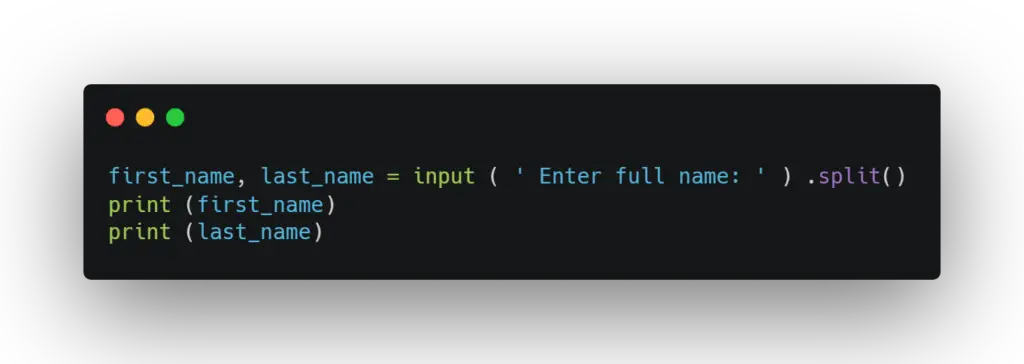In python valueError: need more than 1 value to unpack is a peculiar error to deal with. While working with python, the chances of facing valueError messages are very low but never zero. ValuErrors require unpacking of values with respect to variables to be discarded. Generally, with one value and variable, such an error does not arise. But when it comes to more than one value or variable assigned operations, this type of error can be noticed. This type of errors are known as exception errors as it arises due to difference in number of values and variables.
To deal with the operations with valueError: need more than 1 value to unpack, you may need some help for which this guide can help you.
Contents
What is ValueError?
ValueError is a very common type of mathematical operations-related error in Python. This type of error is usually caused when the user gives an invalid value to a mathematical function with a valid argument. It is known as an exception error which is different from the usual syntax error. These kinds of errors can not be fixed by repairing the error instead, it has to be fixed in an alternative way by rewriting it.
Usually, it occurs with invalid input codes or input values, including some unexpected integer, like functions related to a negative integer.
The valueError: need more than 1 value to unpack is the valueError which usually occurs during a multiple value assignment. It generally occurs with uneven numbers of objects and variable pairs with fewer objects assigned to more variables or vice versa.
How to deal with ValueError?
To remove the valueError from your program, you need to rewrite the errored part as that’s the only way to remove it. To find the cause of the valueError, we need to find the source, which is an invalid output. For this, the ‘try’ and ‘except’ blocks can be used. By using these blocks, you can find the errors easily.
Once you find the type of valueError you can deal with it by doing some minute changes in it or by rewriting it.
What is unpacking?
It is an operation that assigns an object with a countable number of values to a list of variables in an assignment. It is a pretty common operation in python for assigning different variables to different values simultaneously. This operation makes the code easier to understand.
Usually, tuples or lists data structures are used for unpacking operations, but tuples are an easier and more common one. Tuples are created using parentheses ().
For it, you can add your variables in parentheses and then add an equal sign after them. Following that, you can add your values in parentheses. Remember to input equal numbers of values and variables.
E.g.:- (a, b, c) = (1, 2, 3)But if you want, you can skip adding parentheses as it would still be valid syntax. Also, ensure that one variable is assigned for one value for unpacking.
Usually, in valueError the valueError: need more than 1 value to unpack are the common ones for basic operations as it does not require many values. But if there are more than 2 or 3 values then unpacking can be required.
The packing operation is complementary to the unpacking operation. Here, many values get assigned to a single variable. The * operator is used to pack more than one value in a variable. The packing and unpacking features can be used while defining and calling functions.
How to deal with valueError: need more than 1 value to unpack?
As suggested before, this type of error can cause due to mismatch in number of declared variables and the returned values, that is the values assigned to the variables are more in number, or the variables are more in number than the values.
Here are some common valueError examples to help you understand the process to correct valueError.
ValueError solution for Unpacking a list to A variable
This type of method is used where the number of values is not equal to the number of assigned variables. This can be used for valueError: need more than 1 value to unpack.
E.g: –
(a, b) = (1, 2, 3)This type of command will result in the valueError message. In order to get rid of that, you need to equal the number of variables and values.
E.g. : –
(a, b, c) = (1, 2, 3)ValueError solution for Unpacking many values while using functions
While assigning words like names to the variables, the string needs to be split as the full name consists of more than one word. For example, if we try to have the outputs for a name separately as first name and last name, then it would show a valueError. It’s because the full name has two or more words combined without any separating function, which can cause assigning one value to two variables.
E.g: –

But if we add a split function then the valueError can be solved.
E.g.: –

This way, the program won’t show any valueError messages further.
Conclusion
So in any kind of valueError we have to unpack the items in the list and define it for each variable by this way the valuError can be avoided.
References
- Python documentation.
- Digital Ocean tutorials
Also, check out some of the error handling guides by python clear, for example how to fix an invalid index to scaler variable


